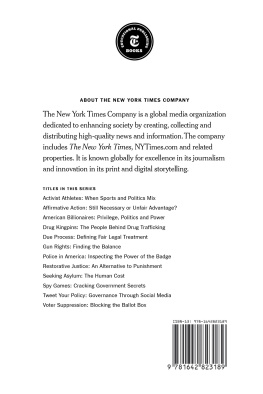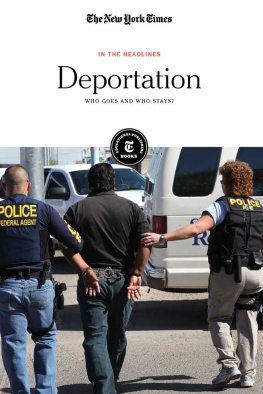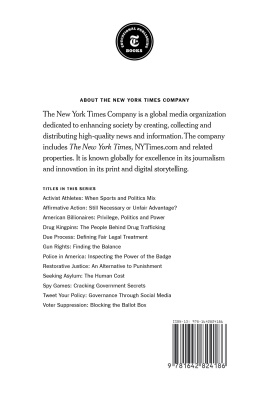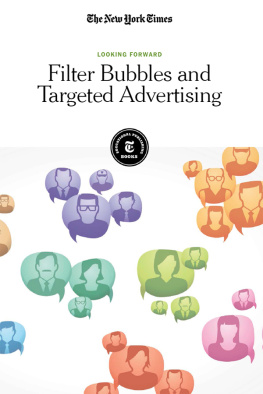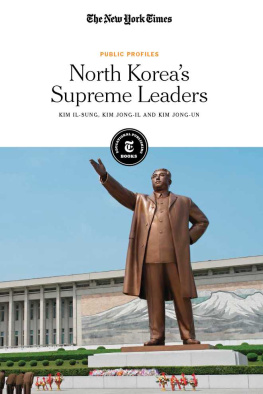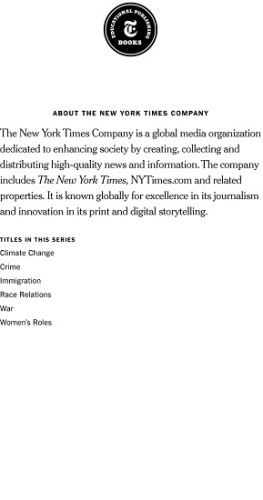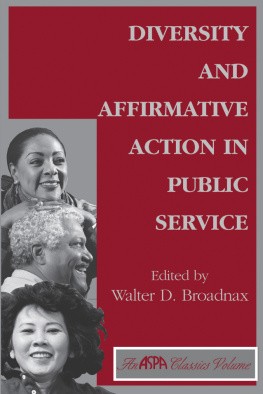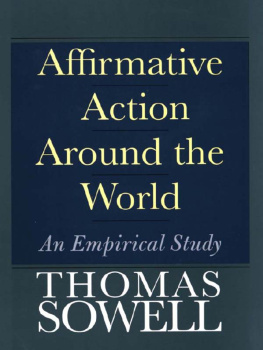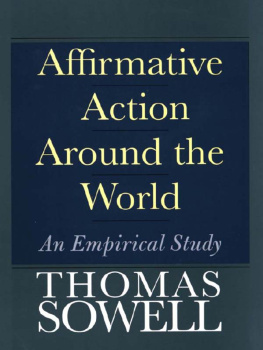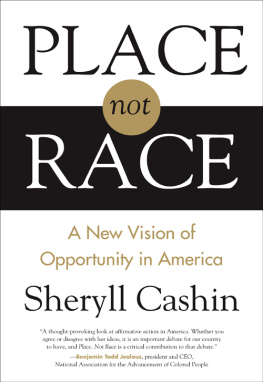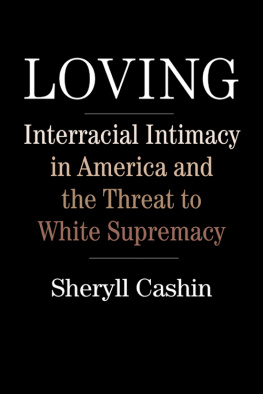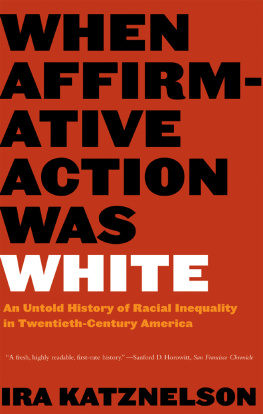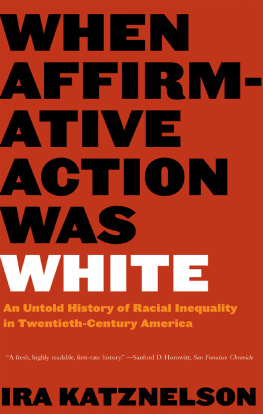
Published in 2021 by New York Times Educational Publishing in association with The Rosen Publishing Group, Inc.
29 East 21st Street, New York, NY 10010
Contains material from The New York Times and is reprinted by permission. Copyright 2021 The New York Times. All rights reserved.
Rosen Publishing materials copyright 2021 The Rosen Publishing Group, Inc. All rights reserved. Distributed exclusively by Rosen Publishing.
First Edition
The New York Times
Caroline Que: Editorial Director, Book Development
Phyllis Collazo: Photo Rights/Permissions Editor
Heidi Giovine: Administrative Manager
Rosen Publishing
Megan Kellerman: Managing Editor
Brandon Battersby: Editor
Brian Garvey: Art Director
Cataloging-in-Publication Data
Names: New York Times Company.
Title: Affirmative action: still necessary or unfair advantage? / edited by the New York Times editorial staff.
Description: New York: New York Times Educational Publishing, 2021. | Series: In the headlines | Includes glossary and index.
Identifiers: ISBN 9781642823189 (library bound) | ISBN 9781642823172 (pbk.) | ISBN 9781642823196 (ebook)
Subjects: LCSH: Discrimination in employmentGovernment policyUnited StatesJuvenile literature. | Discrimination Government policyUnited StatesJuvenile literature. | Civil rightsUnited StatesHistoryJuvenile literature. | Affirmative action programsUnited StatesHistoryJuvenile literature. Classification: LCC HD4903.5.U58 A337 2020 | DDC 331.13'30973dc23
Manufactured in the United States of America
On the cover: Charlayne Hunter, the first African-American woman admitted to the University of Georgia, leaving the registrars office on campus after being enrolled as a student, Jan. 10, 1961; Bettmann/Getty Images.
Contents
Introduction
HISTORY CANT BE REWRITTEN, and American history is riddled with injustices and civil inequalities. Even the Constitution wasnt originally drafted with every American in mind. But in time, the United States has taken big steps to address and rectify the harm caused by decades of discrimination against groups and individuals based on race, sex, age and other characteristics. Affirmative action is one such political device the United States has employed in efforts to accomplish this.
Affirmative action is a set of laws or policies that favor disenfranchised groups of people in efforts to make up for the discriminatory practices of the past. The term affirmative action first appeared in U.S. legislature in the Wagner Act of 1935, which guaranteed employees the right to organize into unions, negotiate with employers as a group and go on strike. But its applications made its first real political debut during World War II under President Franklin D. Roosevelt. To ensure that a united America was entering the great global conflict, the New Deal was proposed and included measures to promote the hiring of women into manufacturing and government positions that were predominantly held by men (now off to war) and ensure that they would be paid fair wages. Laws were also enacted to protect the rights of African-American military personnel who were fighting for their country alongside their white compatriots.
Racial equality was further accelerated during the Kennedy and Johnson administrations during the post-war and civil rights era. It was a very turbulent period for African-Americans, but the movement prompted the greatest legislative support for racial equality in work, education and civil rights that America had seen to date. Many of the government agencies created by the Kennedy administration still operate today and the momentum of his proposals and the civil rights movement led to the signing of the Civil Rights Act of 1964 shortly after Kennedys assassination.
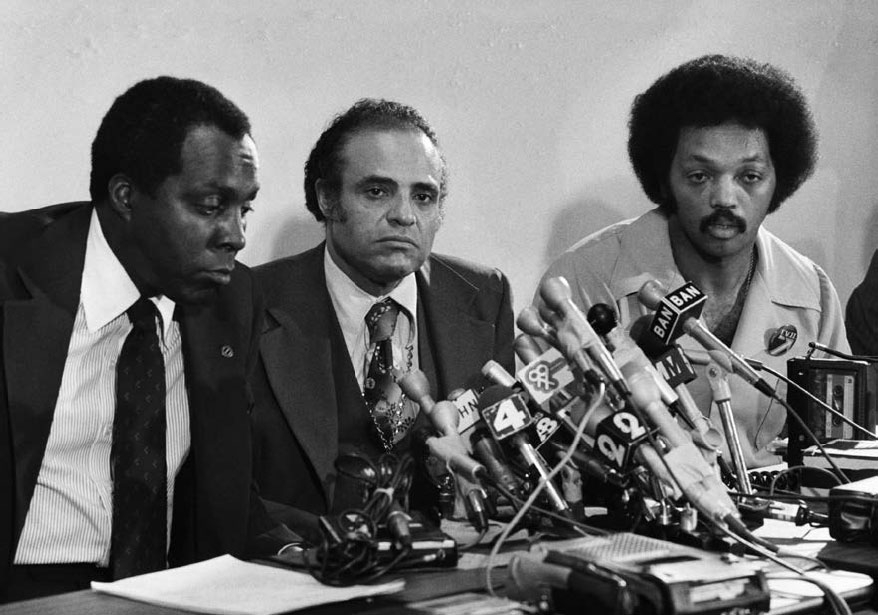
BETTMANN/GETTY IMAGES
From left to right: Vernon Jordan of the Urban League; Benjamin Hooks, executive director of the N.A.A.C.P. and the Rev. Jesse Jackson of PUSH (People United to Save Humanity). In a June 1978 joint news conference in New York following the U.S. Supreme Court decision in Regents of the University of California v. Bakke, Hooks called the decision a clear-cut victory for voluntary affirmative action.
While much progress was made during the 1960s, the next few decades would test and push the boundaries of how affirmative action would be used in private and public sectors to promote equality. During this stretch of time, the laws of the Civil Rights Act and practice of affirmative action were debated in areas such as private enterprise, unions, public works and education. Ground was both gained and lost as a result of key court cases and public policy flip-flopping.
As time ticked on into the 21st century, the debate around affirmative action evolved. Most universities managed to maintain admission policies to evade discrimination in the wake of disgruntled white college candidates. But the same policies meant to promote equality were starting to create bias toward different minority groups: Asian-Americans became the new focus of affirmative action and misuse of racial quotas.
Today, affirmative action continues to be a subject of public interest with mixed perceptions while the government is taking steps to bring us seemingly backwards: The Trump administration is set on reversing Obama-era affirmative action policies. Will affirmative action continue to be a legislative champion of equality, or have select institutions revealed how its misuse hinders the ambition of those in minority groups? Is it an antiquated practice or just one that needs to be refocused to handle todays inequality and civil rights issues?
This collection of New York Times articles chronicles some of Americas greatest applications of affirmative action, including when it has made great leaps and has fallen short, how affirmative action has been received and how the perception of it has evolved over time, and where it may take equality and civil rights in the future.
CHAPTER 1
The New Deal: The Dawn of U.S. Affirmative Action
At the brink of war, President Franklin D. Roosevelt had to ensure the American people would enter World War II united and remain so both at home and on the battlefield. The country had to meet the high demands of war after having been damaged by the Great Depression. In response, F.D.R. crafted a series of economic and civil programs called the New Deal. Laws derived from it would stimulate the workforce by promoting equal job opportunities for women, who were needed to build the great American arsenal. Equally, measures would be taken to prevent discrimination among the ranks of men sent to fight the Germans and the Japanese.
Posts in Cabinets Urged for Women
BY THE NEW YORK TIMES | DEC. 4, 1936
PRESIDENT ROOSEVELT AND State Governors were urged yesterday by the National Council of Women to give special consideration to the appointment of women to the Cabinet and other positions of prestige and responsibility in the Federal and State Governments.
Closing a two-day session at the Hotel Astor, the council unanimously adopted a resolution declaring that women have peculiar talents for many government posts involving a sense of social responsibility and respectfully asked the President and the Governors to consider these talents in making appointments.
The council also strongly opposed any inequality of opportunity or pay between men and women in industry.
The Federal Government was commended in another resolution for its program providing employment for needy women and for maintaining for women an equal wage for equal work.
Next page
